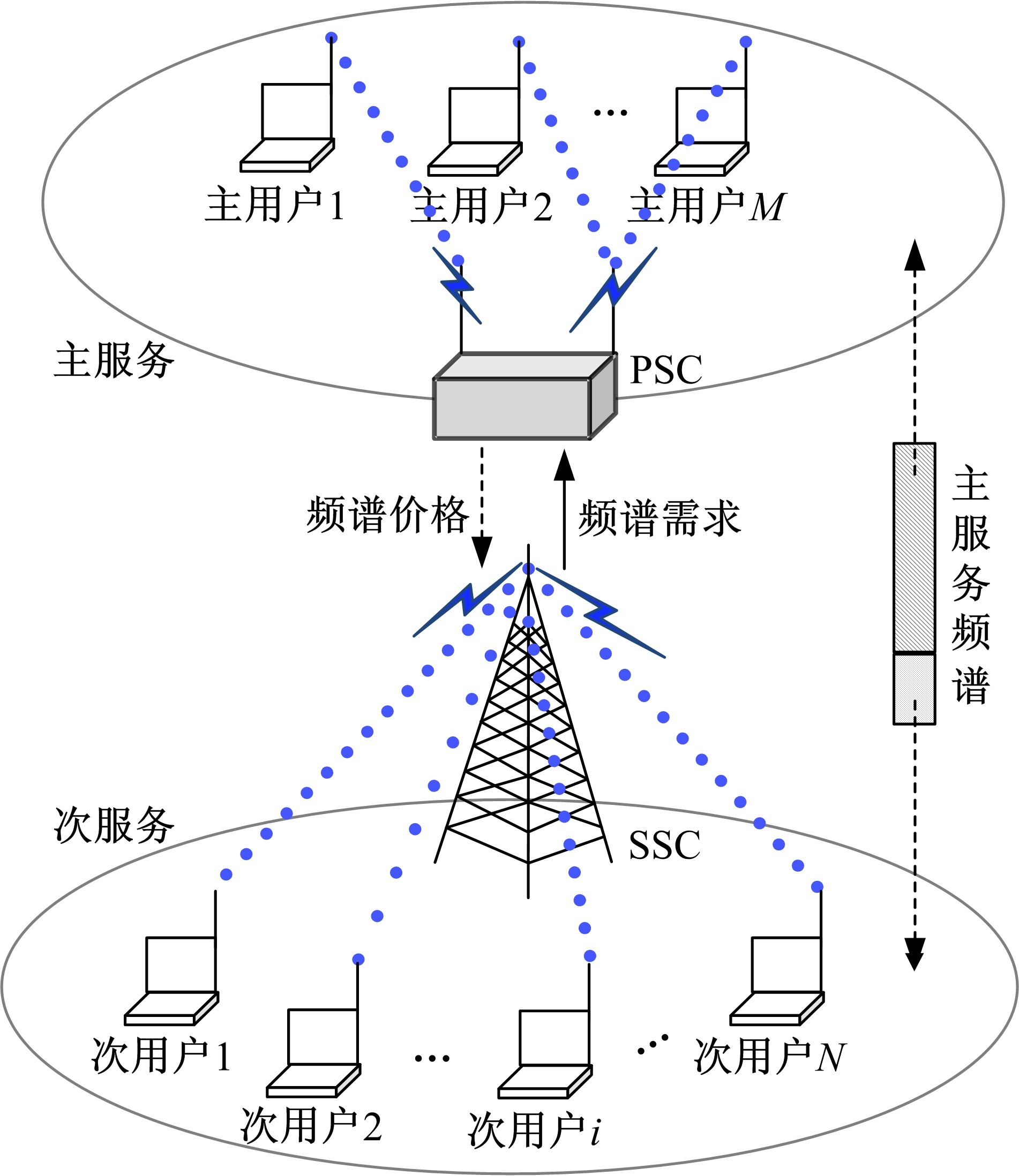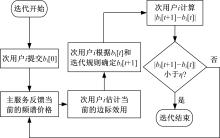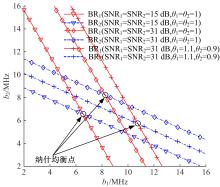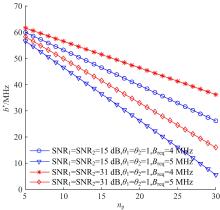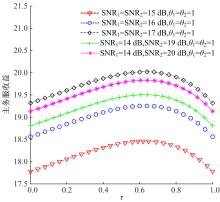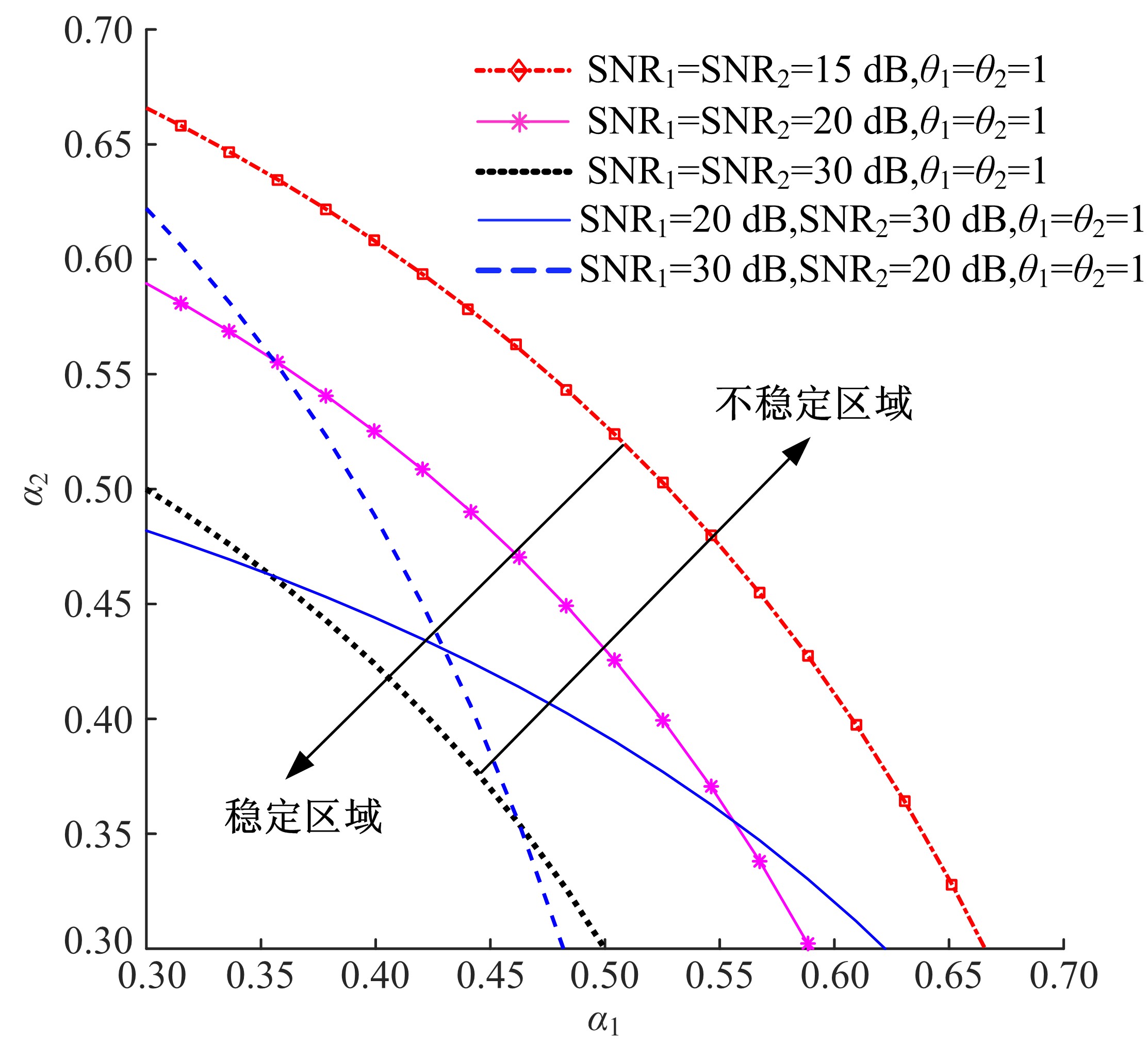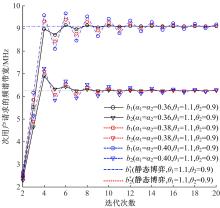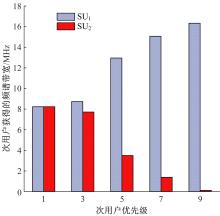Journal of Jilin University(Engineering and Technology Edition) ›› 2020, Vol. 50 ›› Issue (1): 315-323.doi: 10.13229/j.cnki.jdxbgxb20180998
Dynamic game algorithm for spectrum sharing based on priority of secondary users
Cui-ran LI( ),Yong-sheng YU,Jian-li XIE
),Yong-sheng YU,Jian-li XIE
- School of Electronics and Information Engineering, Lanzhou Jiaotong University, Lanzhou 730070, China
CLC Number:
- TN929.5
| 1 | Wang T, Li G, Ding J, et al. 5G spectrum: is china ready?[J]. IEEE Communications Magazine, 2015, 53(7): 58-65. |
| 2 | Yang C, Li J, Guizani M, et al. Advanced spectrum sharing in 5G cognitive heterogeneous networks[J]. IEEE Wireless Communications,2016,23(2): 94-101. |
| 3 | Zhang L, Xiao M, Wu G, et al. A survey of advanced techniques for spectrum sharing in 5G networks[J]. IEEE Wireless Communications, 2017, 24(5): 44-51. |
| 4 | Sohul M M, Yao M, Abdallah A S, et al. Quality of service assurance-based auction for spectrum sharing systems[J]. Analog Integrated Circuits & Signal Processing, 2017, 91(2): 203-216. |
| 5 | Gao L, Duan L, Huang J. Two-sided matching based cooperative spectrum sharing[J]. IEEE Transactions on Mobile Computing, 2017, 16(2): 538-551. |
| 6 | Niyato D, Hossain E. Competitive spectrum sharing in cognitive radio networks: a dynamic game approach[J]. IEEE Transactions on Wireless Communications, 2008, 7(7): 2651-2660. |
| 7 | 黄丽亚, 刘臣, 王锁萍. 改进的认知无线电频谱共享博弈模型[J]. 通信学报, 2010, 31(2): 136-140. |
| Huang Li-ya, Liu Chen, Wang Suo-ping. Improved spectrum sharing model in cognitive radios based on game theory[J]. Journal on Communications, 2010, 31(2): 136-140. | |
| 8 | 韩松, 李鑫滨, 马锴,等. 改进的认知无线电系统中频谱共享博弈算法[J]. 北京理工大学学报, 2017, 37(7):758-764. |
| Han Song, Li Xin-bin, Ma Kai, et al. Improved game-theoretic algorithm for spectrum sharing in cognitive radio[J]. Transactions of Beijing Institute of Technology, 2017, 37(7): 758-764. | |
| 9 | 谢健骊. 认知的铁路移动通信网络分簇频谱感知与共享研究[D]. 兰州:兰州交通大学电子与信息工程学院, 2014.Xie Jian-li. Research on clustering spectrum sensing and sharing for cognitive railway mobile communication network[D]. Lanzhou:School of Electronics and Information Engineering, Lanzhou Jiaotong University, 2014. |
| 10 | Ahmad I, Wan C, Chang K. LTE-Railway user priority-based cooperative resource allocation schemes for coexisting public safety and railway networks[J]. IEEE Access, 2017, 5: 7985-8000. |
| 11 | 李翠然, 钟章队, 谢健骊. 认知的铁路应急自组织网络研究[J]. 铁道学报, 2013, 35(1): 60-65. |
| Li Cui-ran, Zhong Zhang-dui, Xie Jian-li. Research on railway emergency Ad Hoc network based on cognitive radio[J]. Journal of the China Railway Society, 2013, 35(1): 60-65. | |
| 12 | Zhong Z D, Ai B, Zhu G, et al. Dedicated Mobile Communications for High-speed Railway[M]. Berlin: Springer, 2018. |
| 13 | Niyato D, Hossain E. Spectrum trading in cognitive radio networks: a market equilibrium based approach[J]. IEEE Wireless Communications, 2008, 15(6): 71-80. |
| 14 | Lin P, Jia J, Zhang Q, et al. Dynamic spectrum sharing with multiple primary and secondary users[J]. IEEE Transactions on Vehicular Technology, 2011, 60(4): 1756-1765. |
| 15 | Agiza H N, Bischi G I, Kopel M. Multistability in a dynamic Cournot game with three oligopolists[J]. Mathematics and Computers in Simulation, 1999, 51(1/2): 63-90. |
| [1] | Yi LIU,Ling-ling XIAO,Gai-jing WANG,Wu-jun ZHANG. Resource allocation algorithm based joint optimization for D2D communications in cellular networks [J]. Journal of Jilin University(Engineering and Technology Edition), 2020, 50(1): 306-314. |
| [2] | Wen-jun LI,Qiang HUA,Li-dong TAN,Yue SUN. An improved algorithm for combination of DV-HOP and RSSI [J]. Journal of Jilin University(Engineering and Technology Edition), 2019, 49(5): 1689-1695. |
| [3] | Hong-yan WANG,Yun-fei FANG,Sheng-qi ZHU,Bing-nan PEI. DOA estimation method considering mutual coupling effect in presence of non⁃uniform noise [J]. Journal of Jilin University(Engineering and Technology Edition), 2019, 49(5): 1706-1714. |
| [4] | Yong LIU,Fang⁃shun DENG,Xiao⁃lin LIU,Si⁃jie MIN,Peng WANG. Frequency estimation of minimum shift keying signal based on dual chaotic oscillator [J]. Journal of Jilin University(Engineering and Technology Edition), 2019, 49(4): 1357-1362. |
| [5] | Hong⁃zhi WANG,Fang⁃da JIANG,Ming⁃yue ZHOU. Power allocation of cognitive radio system based on genetic particle swarm optimization [J]. Journal of Jilin University(Engineering and Technology Edition), 2019, 49(4): 1363-1368. |
| [6] | ZHOU Yan-guo,ZHANG Hai-lin,CHEN Rui-rui,ZHOU Tao. Two-level game approach based resource allocation scheme in cooperative networks [J]. Journal of Jilin University(Engineering and Technology Edition), 2018, 48(6): 1879-1886. |
| [7] | SUN Xiao-ying, HU Ze-zheng, YANG Jin-peng. Assessment method of electromagnetic pulse sensitivity of vehicle engine system based on hierarchical Bayesian networks [J]. 吉林大学学报(工学版), 2018, 48(4): 1254-1264. |
| [8] | DONG Ying, CUI Meng-yao, WU Hao, WANG Yu-hou. Clustering wireless rechargeable sensor networks charging schedule based on energy prediction [J]. 吉林大学学报(工学版), 2018, 48(4): 1265-1273. |
| [9] | DING Ning, CHANG Yu-chun, ZHAO Jian-bo, WANG Chao, YANG Xiao-tian. High-speed CMOS image sensor data acquisition system based on USB 3.0 [J]. 吉林大学学报(工学版), 2018, 48(4): 1298-1304. |
| [10] | MOU Zong-lei, SONG Ping, ZHAI Ya-yu, CHEN Xiao-xiao. High accuracy measurement method for synchronous triggering pulse transmission delay in distributed test system [J]. 吉林大学学报(工学版), 2018, 48(4): 1274-1281. |
| [11] | CHEN Rui-rui, ZHANG Hai-lin. Performance analysis of 3D millimeter wave communications [J]. 吉林大学学报(工学版), 2018, 48(2): 605-609. |
| [12] | GUAN Ji-shi, SHI Yao-wu, QIU Jian-wen, SHAN Ze-biao, SHI Hong-wei. New algorithm to estimate characteristic exponent of α-stable distribution [J]. 吉林大学学报(工学版), 2018, 48(2): 618-624. |
| [13] | ZHANG Chao-yi, LI Jin-hai, YAN Yue-peng. Improved Tong detection algorithm with double thresholds [J]. 吉林大学学报(工学版), 2018, 48(2): 610-617. |
| [14] | SUN Xiao-ying, WANG Zhen, YANG Jin-peng, HU Ze-zheng, CHEN Jian. Electromagnetic susceptibility assessment of electronic throttle based on Bayesian network [J]. 吉林大学学报(工学版), 2018, 48(1): 281-289. |
| [15] | WANG Jin-peng, CAO Fan, HE Xiao-yang, ZOU Nian-yu. Multi carrier system joint receiving method based on MAI and ICI [J]. 吉林大学学报(工学版), 2018, 48(1): 301-305. |
|
||

